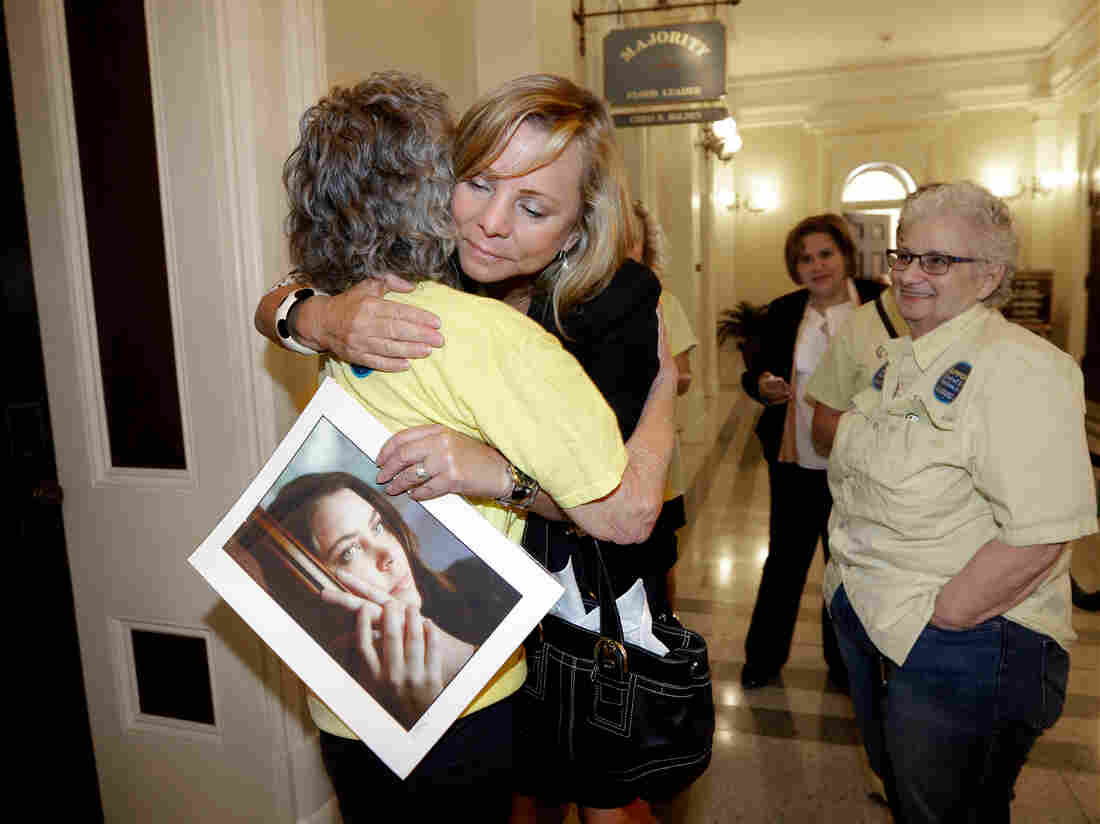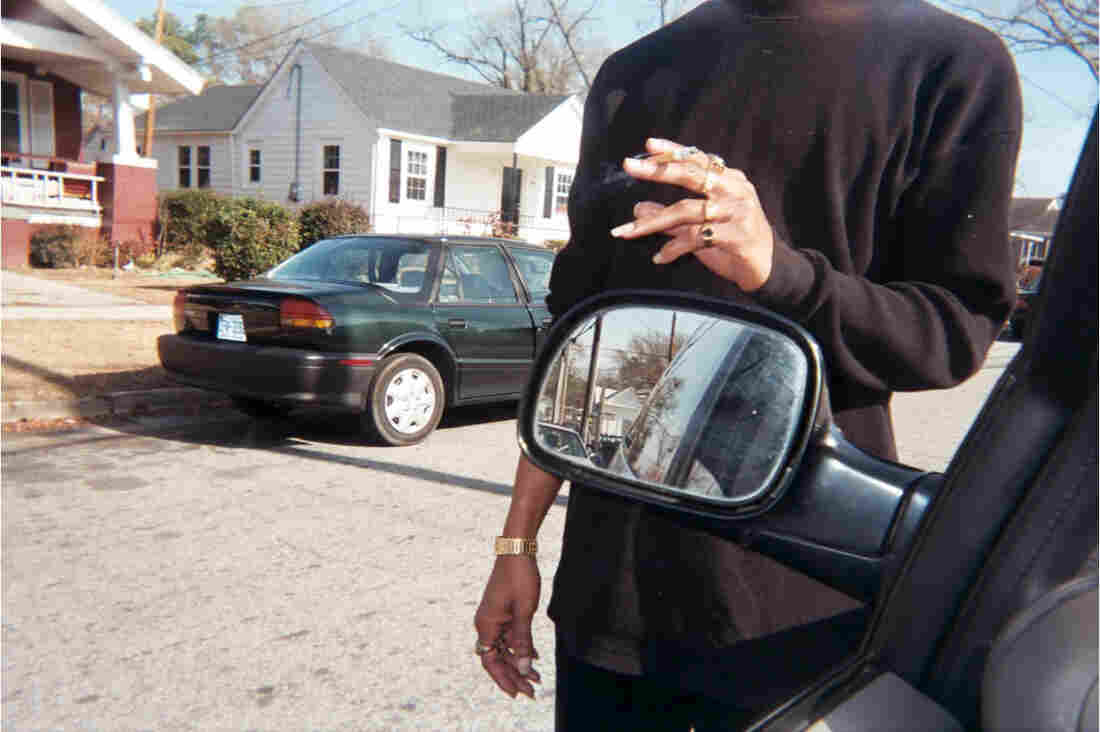Called Back After A Mammogram? Doctors Are Trying To Make It Less Scary
Although false alarms are not at all unusual when it comes to mammograms, they can cause women much anxiety. Doctors are thinking about ways to ease those fears. Helen King/Corbis hide caption
itoggle caption Helen King/Corbis
When I left my first mammogram appointment a few weeks ago, I felt fine.
Everything had gone smoothly, the technologist hadn’t made a concerned face when she looked at the screen, and I was convinced I’d get the all-clear from my primary care doctor in a week or so.
Then came the phone calls the following day — first from my doctor’s office, then from the mammography center — telling me the radiologist had seen something that didn’t look quite right. I needed to come back for another mammogram and this time an ultrasound exam, too.
I shouldn’t worry, both callers said. But it was too late.
My thoughts had already leapt to the worst-case scenario, and remained there for the (blessedly few) days it took to get a follow-up scan and then the reassurance that it was nothing to worry about.
I’m still pretty shocked by the degree of anxiety the whole incident provoked. I write about health and in theory should know that the odds were in my favor. But I spent those couple of days in between scans miserable.
My stress went away pretty soon after getting the good news. But the experience made me wonder about the frequency of these recalls and the anxiety they can provoke. And I also wondered if there’s anything to be done about it.
As it turns out, false alarms are not at all unusual when it comes to mammograms.
According to the American College of Radiology, for every 1,000 women who have a screening mammogram, 100 will be called back for another look, and 61 will find nothing wrong after follow-up imaging. Five of those 1,000 will ultimately be diagnosed with breast cancer after further testing, according to the ACR.
The recall rate is higher for women, like me, having their first mammograms — likely closer to 20 percent on average and as high as 50 percent at some facilities, says Stamatia Destounis, a radiologist at Elizabeth Wende Breast Care in Rochester, N.Y., and a professor of radiology at the University of Rochester.
For a first visit, if a radiologist sees an area of density or calcification or a nodule, it’s not possible to look back on previous scans to see if it’s new or has been there, unchanged, for years. So those things are more likely to get checked out by follow-up imaging.
Assessing a mammogram is very different than, say, looking at a femur on an X-ray. “Every breast looks different,” says Debra Monticciolo, chairwoman of the ACR’s Commission on Breast Imaging and a professor of radiology at Texas A&M University College of Medicine. “It’s like reading fingerprints. There isn’t just one normal.”
Women who are pre-menopausal also tend to have denser breast tissue, which makes mammograms harder to read and more likely to prompt a recall, says Destounis.
Those false positives aren’t happening in the same women over and over again, either. According to an analysis published last year in JAMA, the journal of the American Medical Association, over the course of 10 years of annual mammograms starting at age 50, about 61 percent of women will have at least one false positive result.
As for the emotional consequences, a study published last year in JAMA Internal Medicine found false positives are associated with anxiety, but that it had dissipated a year later.
“When you first get called back, you go through all these ideas of what that might mean,” says Anna Tosteson, a professor of medicine at the Geisel School of Medicine at Dartmouth University and an author of the study. “Then you think, ‘I’m so glad I don’t have cancer.’ ” She says anxiety might be more persistent, however, if a woman is recalled year after year.
Doctors are thinking about how to make recalls less miserable.
A study published in 2004 in the Journal of the National Cancer Institute looked at two interventions to see if they would reduce the worry and stress caused by false positive mammograms. The first was immediate reading of the initial mammogram so that follow-up imaging could be done at the same visit, eliminating those days or weeks of worried waiting. (Some women still needed a biopsy or other follow-up to confirm a false positive.)
And the second focused on educational materials — a pamphlet and video that included information about the risk of an abnormal mammogram, common follow-up procedures and tips and strategies for reducing stress and anxiety. That material was provided to women while they waited to see whether mammogram images were clear enough to be read.
“We were trying to normalize the experience” of getting a false positive mammogram, says Mary Barton, an author of the study and now vice president of performance measurement at the nonprofit National Committee for Quality Assurance.
The study found that three weeks after the mammogram, the women with false positive results whose scans were read on the same day had lower levels of anxiety than those whose scans were read later. But that difference had balanced out three months after the mammogram.
Some centers do offer the option of same-day reading, says the ACR’s Monticciolo, though it can be less efficient for the imaging center. And, she says, “some patients don’t want to wait around.”
Receiving the educational materials during the visit wasn’t associated with any difference in anxiety, though. That may be because of the cultural fears surrounding breast cancer, says Barton. As a comparison, she notes, very few people get really stressed out while awaiting the results of a cholesterol test.
There’s a broader debate going on about when to start mammography. And when a woman speaks with her primary care doctor about the screening test, “part of that conversation should be educating women just how common these callbacks are,” says Tosteson.
I’m hoping to be less stressed out if it happens to me again, but I’d just as soon it didn’t.
Katherine Hobson is a freelance health and science writer based in Brooklyn, N.Y. She’s on Twitter: @katherinehobson
This entry passed through the Full-Text RSS service – if this is your content and you’re reading it on someone else’s site, please read the FAQ at fivefilters.org/content-only/faq.php#publishers.









